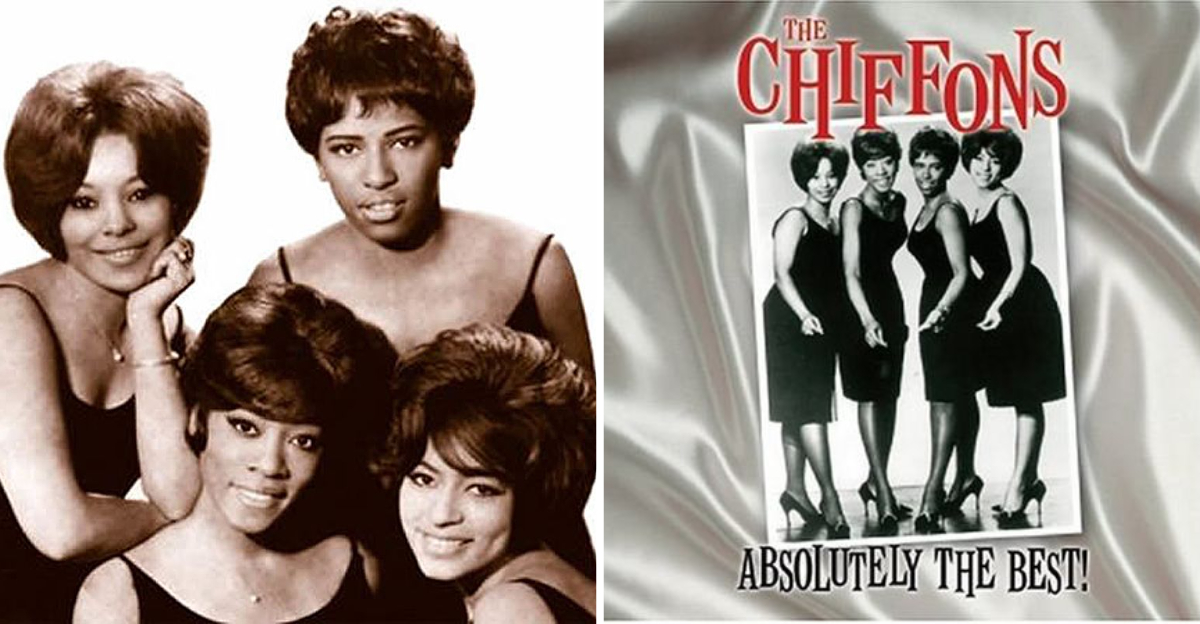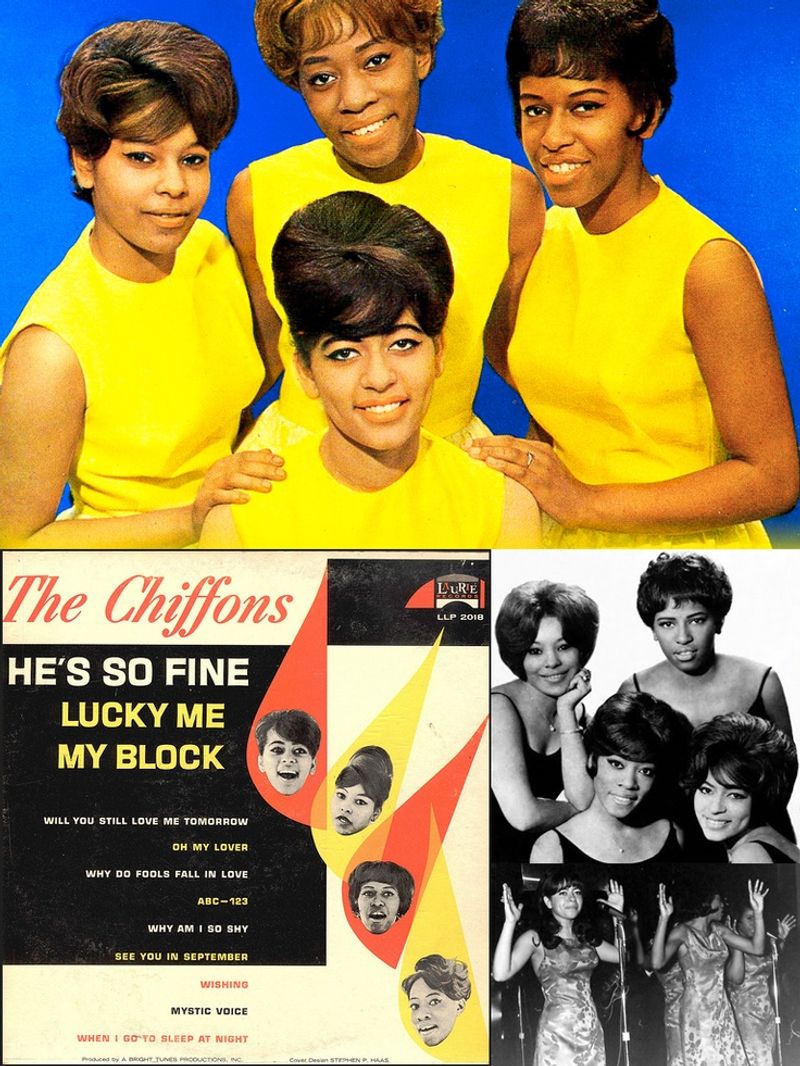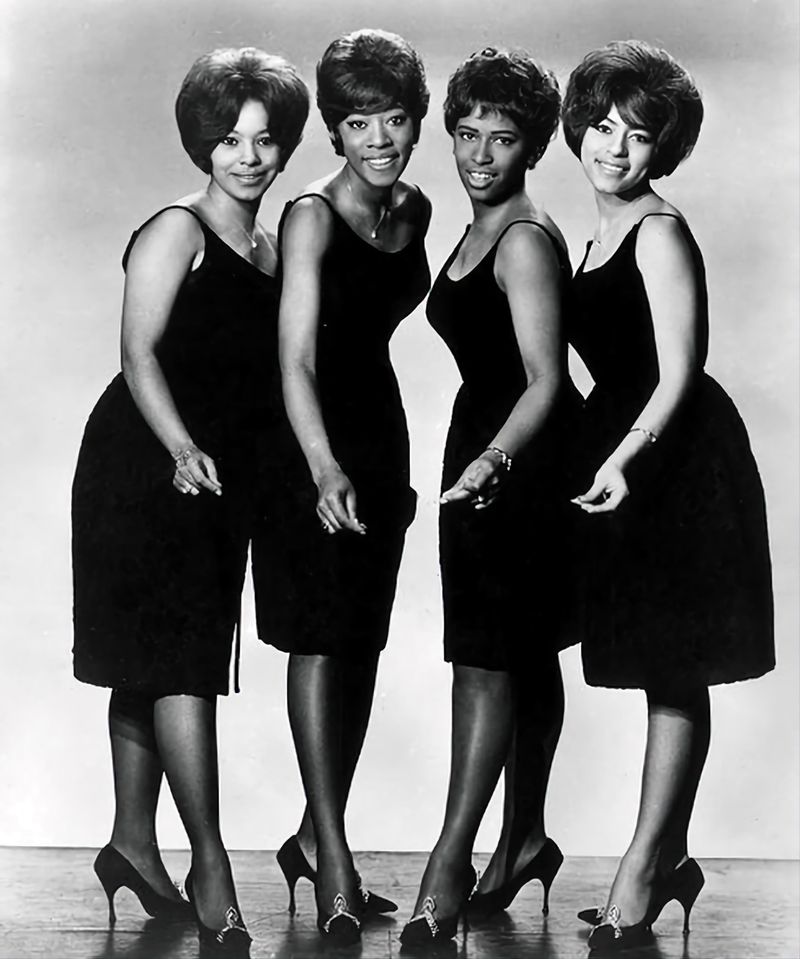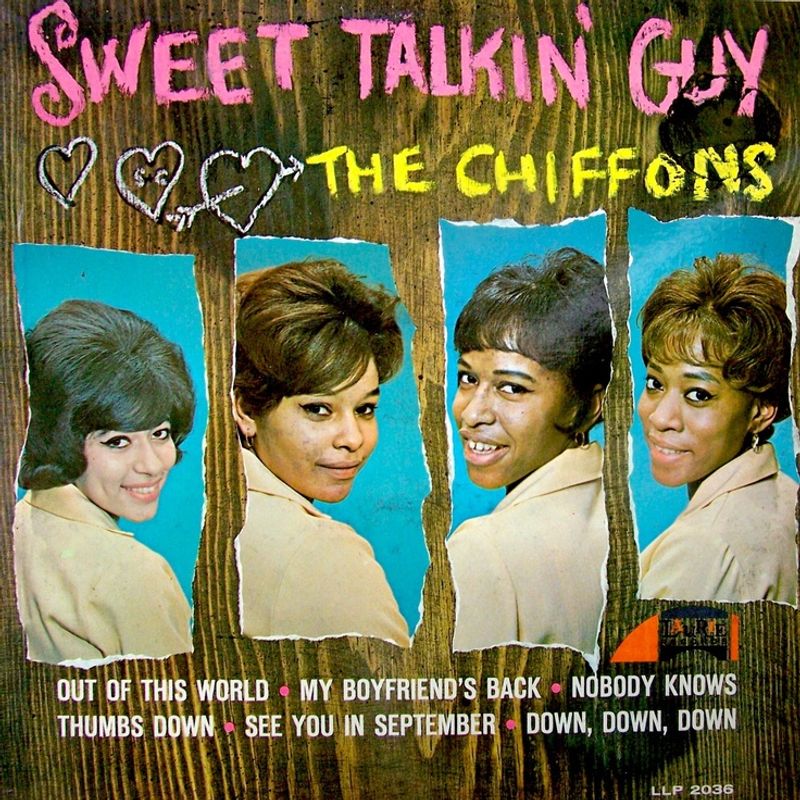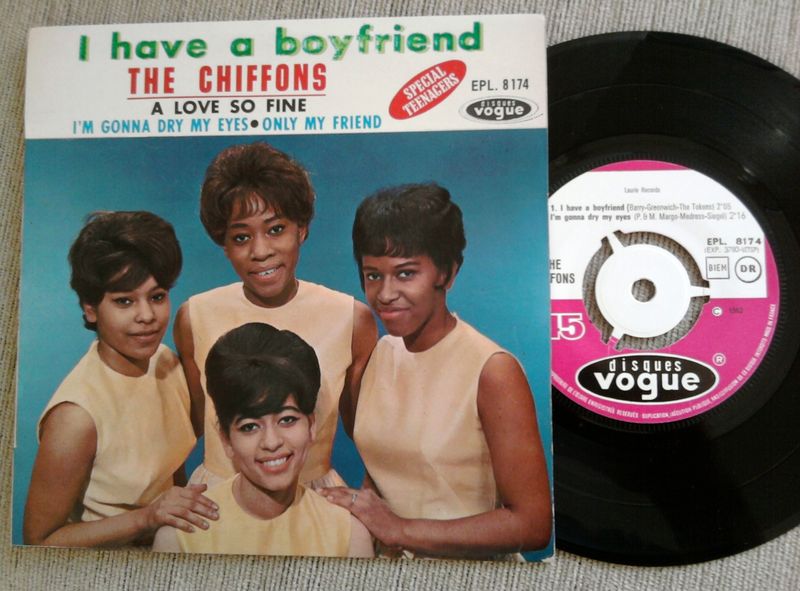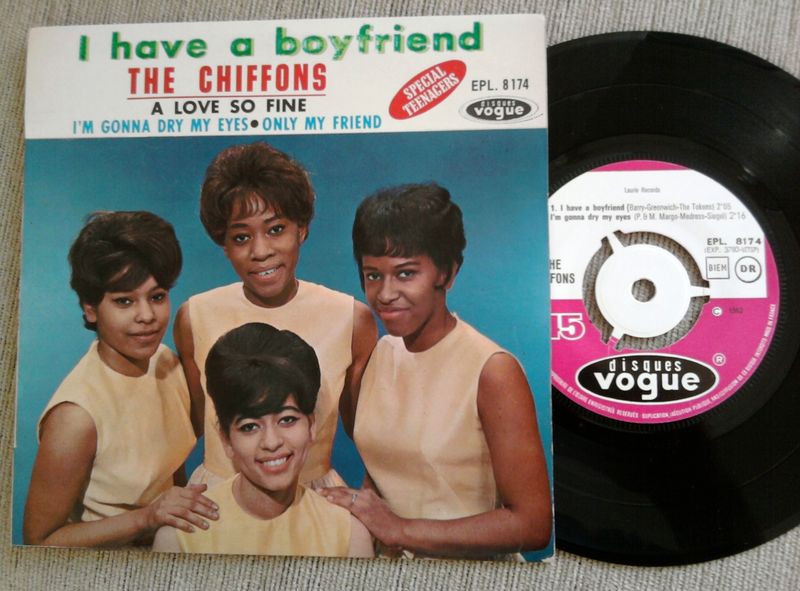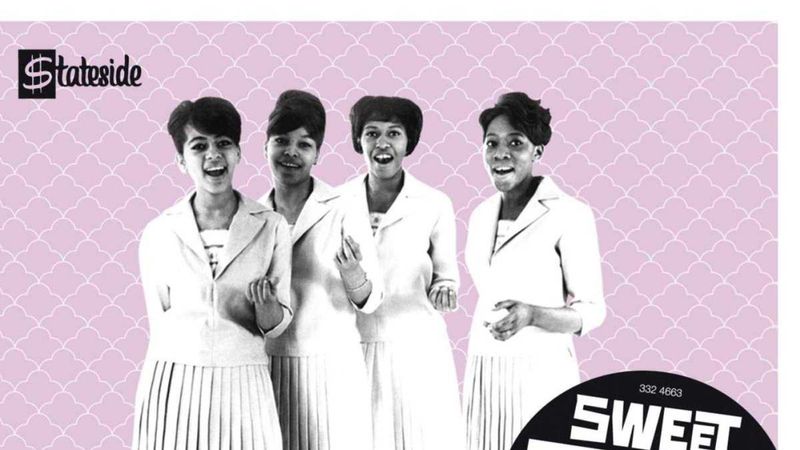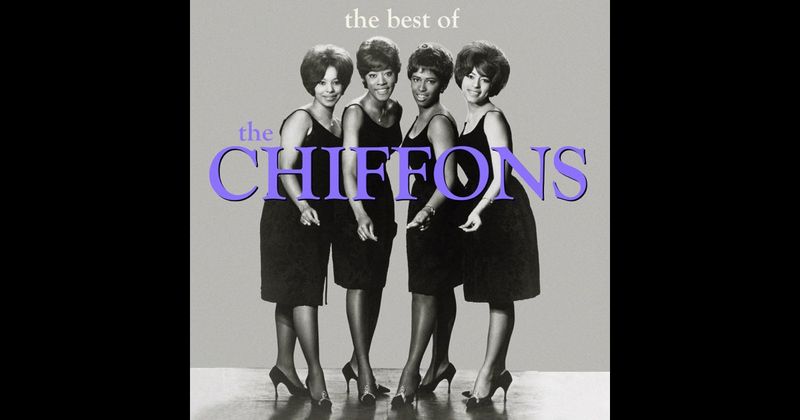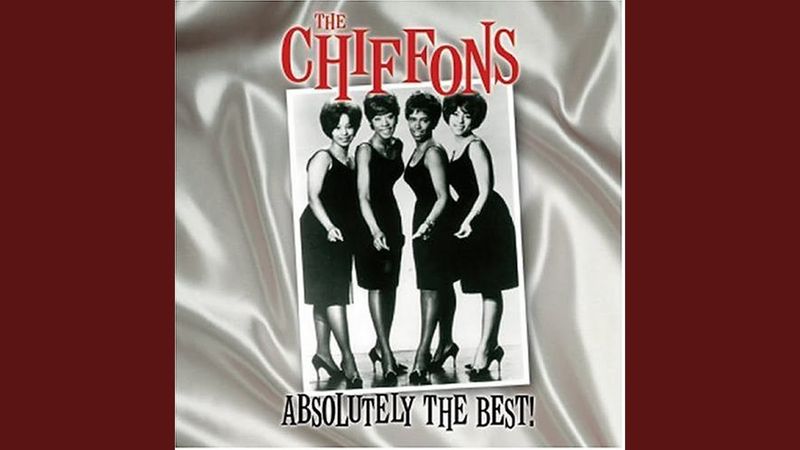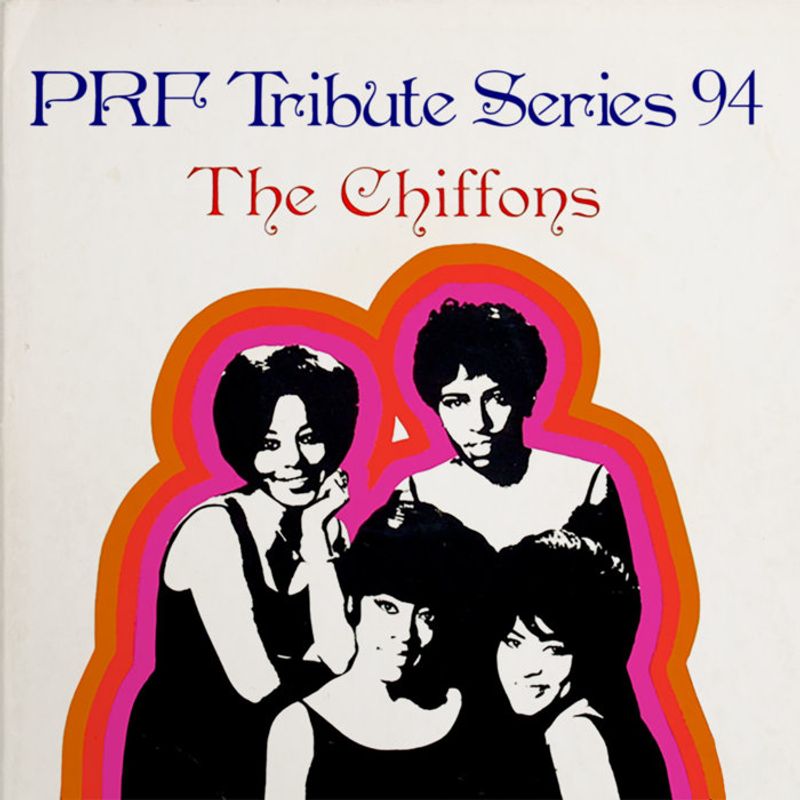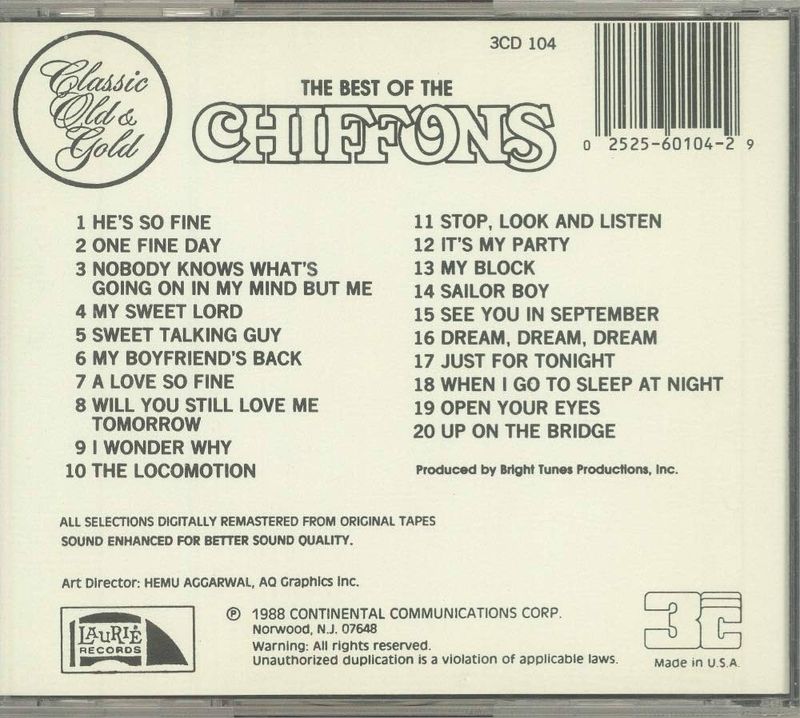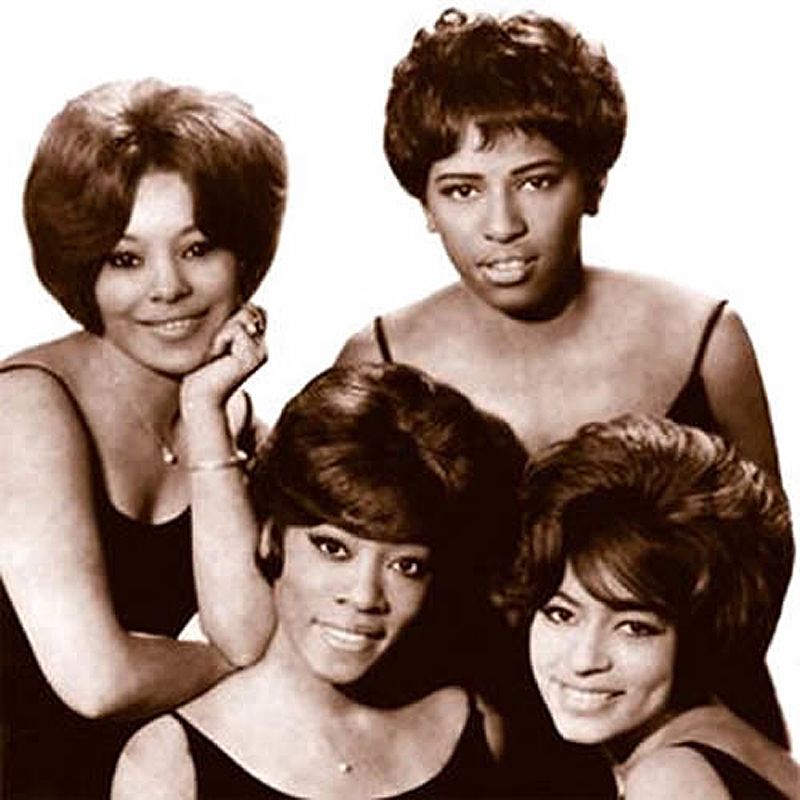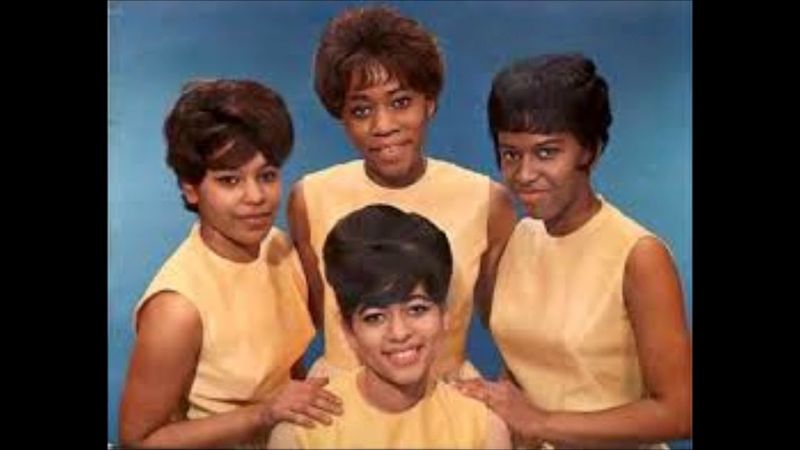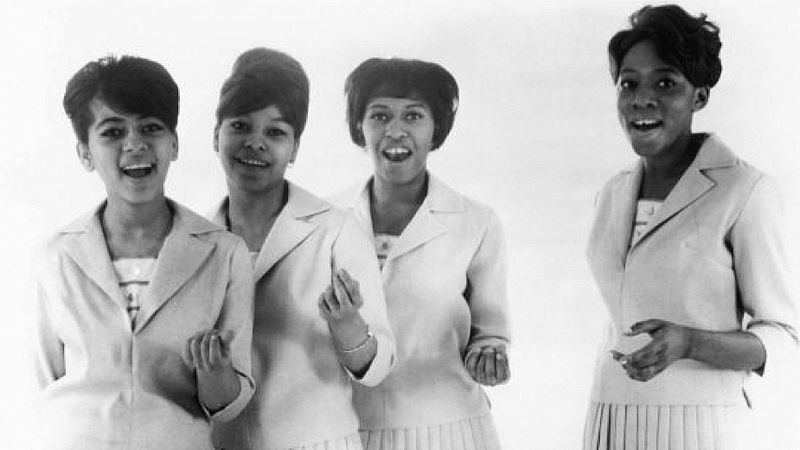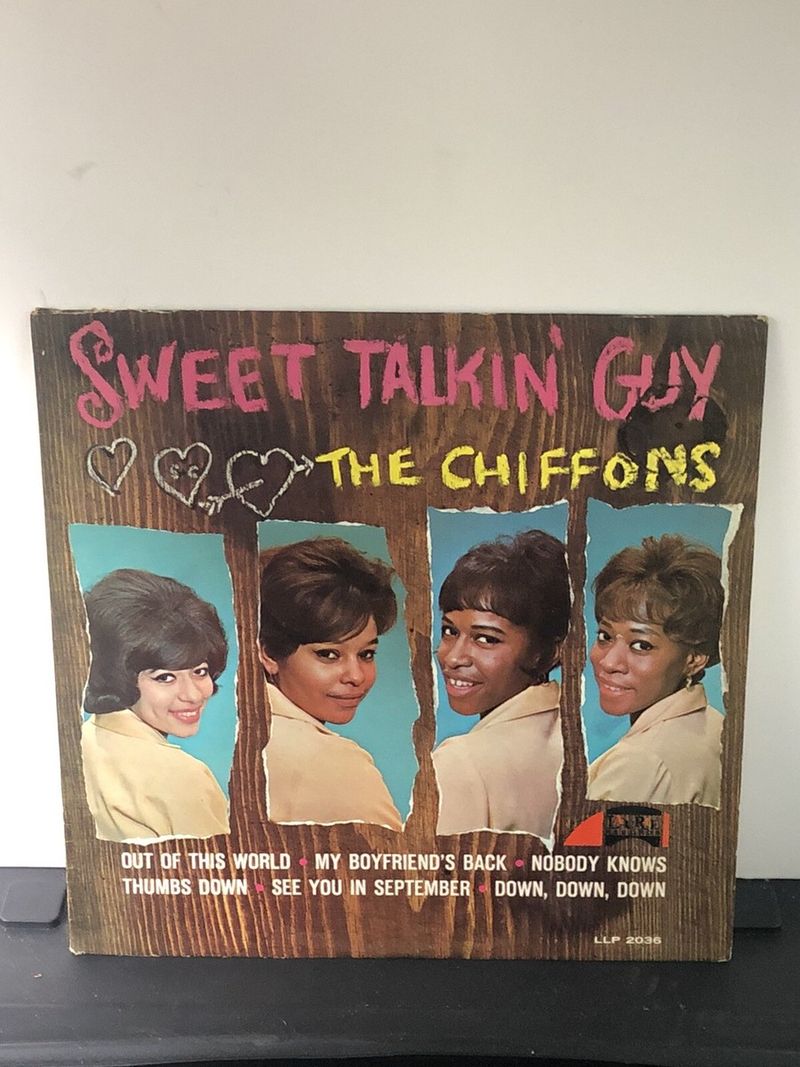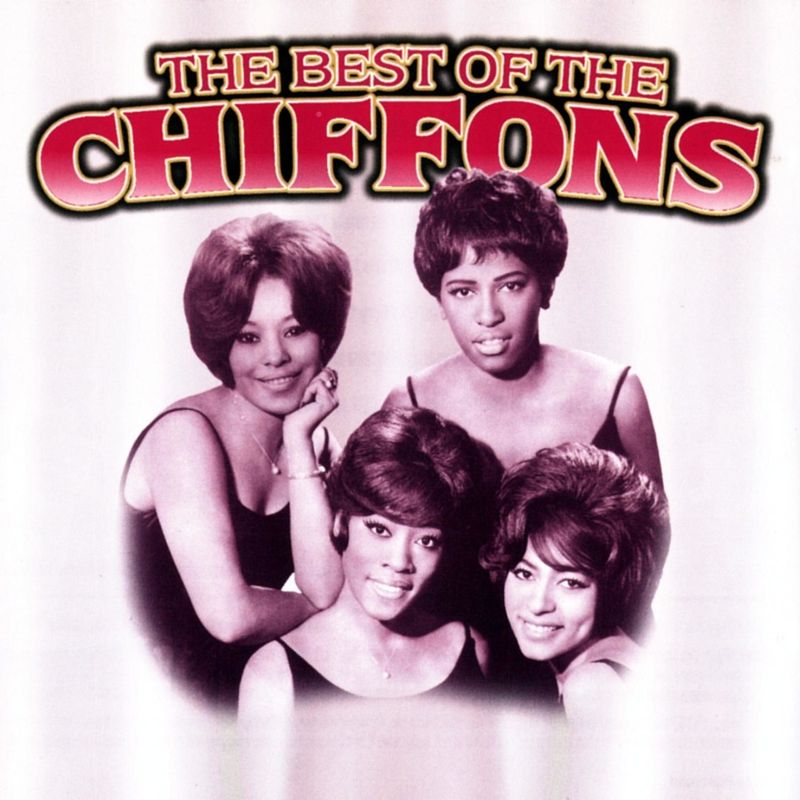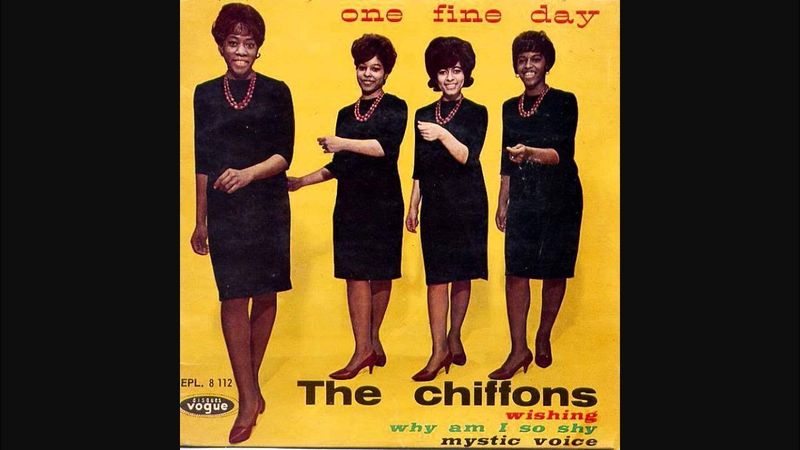The Chiffons burst onto the music scene in the early 1960s, becoming one of the most beloved girl groups of their era. These talented young women from the Bronx created unforgettable harmonies that perfectly captured the innocence and optimism of the time. Their songs have stood the test of time, remaining favorites for fans of classic pop and doo-wop music around the world.
1. He’s So Fine (1963)
Those infectious ‘doo-lang’ refrains changed music history when they hit airwaves in 1963. The Chiffons’ debut single skyrocketed to number one on the Billboard Hot 100, establishing them as formidable talents in the competitive girl group landscape.
What made this track special wasn’t just its commercial success but its deceptive simplicity. The harmonies blend seamlessly while the lyrics capture youthful infatuation with charming directness.
This song later became the center of a famous copyright case when George Harrison’s ‘My Sweet Lord’ was found to have unintentionally copied its distinctive melody – cementing its place in music history twice over.
2. One Fine Day (1963)
Carole King and Gerry Goffin crafted this masterpiece that perfectly showcased The Chiffons’ vibrant harmonies. The song’s optimistic outlook and infectious melody made it an instant classic, climbing to number five on the charts.
Behind the cheerful facade lies impressive vocal technique. Lead singer Judy Craig’s confident delivery contrasts beautifully with the supporting harmonies, creating a rich tapestry of sound.
The track’s enduring appeal led to numerous cover versions over decades, including a notable one by Carole King herself. Yet none capture the youthful exuberance and authentic joy that The Chiffons brought to this timeless song about hoping tomorrow brings love.
3. Sweet Talkin’ Guy (1966)
Released during the British Invasion era, this catchy comeback hit proved The Chiffons could evolve with changing musical tastes. The lyrics warn about smooth-talking heartbreakers – a relatable theme that resonated with young listeners navigating the dating scene.
Musically, the track features more sophisticated production than their earlier work. The harmonies remain tight while the instrumentation incorporates elements that reflect mid-60s pop sensibilities.
Reaching number ten on the charts, this song demonstrated the group’s staying power three years after their initial success. Its enduring popularity in films and on oldies stations speaks to how perfectly it captured both its era and timeless relationship dynamics.
4. I Have a Boyfriend (1963)
Playful piano opens this charming narrative about staying loyal to an absent boyfriend despite temptation. Unlike many songs that focus on heartbreak, this track celebrates commitment with refreshing sincerity.
The vocals showcase the group’s signature layered harmonies, with the lead and background parts weaving together like a musical conversation. Their youthful energy perfectly matches the innocent theme.
While not reaching the commercial heights of their biggest hits, this song has gained appreciation over time for its sweetness and authenticity. The production captures that magical early Sixties sound when girl groups ruled the airwaves and brought female perspectives to pop music with unabashed enthusiasm.
5. Lucky Me (1963)
Gratitude for finding true love radiates through every note of this uplifting B-side treasure. The Chiffons deliver a masterclass in vocal harmony, creating a warm sonic embrace that perfectly complements the heartfelt lyrics.
Recorded during their phenomenal breakthrough year, this track showcases their ability to infuse simple love songs with genuine emotion. The production features subtle instrumental flourishes that enhance rather than overshadow their voices.
Music historians often point to this lesser-known gem as evidence of the group’s depth beyond their chart-toppers. The song captures that magical moment when you realize someone special has chosen you, delivered with the authentic joy that made The Chiffons so beloved by fans seeking both entertainment and emotional connection.
6. A Love So Fine (1963)
Bouncy percussion and jubilant vocals announce this celebration of newfound romance. Released during their breakthrough year, this track demonstrates why The Chiffons stood out among the crowded field of girl groups.
Their harmonies achieve that elusive blend of technical precision and emotional authenticity. Each voice contributes something essential to the overall sound, creating a musical chemistry that can’t be manufactured.
The lyrics might seem simple by today’s standards, but they capture universal feelings with refreshing directness. When they sing about a love that feels so wonderful it must be divinely blessed, the joy in their voices makes you believe every word. This track remains a perfect time capsule of youthful optimism and musical craftsmanship.
7. My Boyfriend’s Back (1963)
Though most famously recorded by The Angels, The Chiffons brought their distinctive vocal approach to this playful warning to a would-be romantic rival. Their version transforms the song through subtle differences in phrasing and harmony structure.
Sharp listeners notice how they emphasize different lyrical elements, bringing fresh meaning to the narrative. The arrangement maintains the original’s energy while allowing their signature sound to shine through.
This cover demonstrates their versatility and musical intelligence. Rather than simply mimicking another group’s hit, they reimagined it through their unique artistic lens. The result showcases why The Chiffons remained relevant even when interpreting material associated with their contemporaries – they always made each song distinctively their own.
8. Nobody Knows What’s Goin’ On (In My Mind But Me) (1965)
Breaking from their usual romantic themes, this introspective gem explores the gap between public persona and private thoughts. The longer title itself hints at the more complex territory The Chiffons were exploring as they matured artistically.
Musically, the track features more sophisticated arrangements than their earlier hits. The vocals maintain their signature harmony style while conveying deeper emotional nuance.
Released as musical tastes were rapidly evolving, this song demonstrated their ability to grow beyond the innocent girl group sound that first made them famous. The lyrics speak to universal experiences of hiding one’s true feelings – a theme that resonates across generations and helps explain why this lesser-known track has developed a devoted following among serious fans.
9. Will You Still Love Me Tomorrow (1963)
Breathtaking vulnerability defines The Chiffons’ interpretation of this Shirelles classic. Rather than simply covering another girl group’s hit, they reinvented it through subtle changes in vocal emphasis and emotional delivery.
The arrangement strips back some elements to spotlight their incredible harmonies. Each voice contributes essential emotional texture, creating a conversation between uncertainty and hope that perfectly captures the song’s central question.
While The Shirelles’ original remains definitive, many fans consider this version equally moving for different reasons. The Chiffons bring a slightly more optimistic energy to the narrative, suggesting the singer finds strength in asking the difficult question about whether a night of romance will lead to lasting love.
10. The Loco-Motion (1963)
Electric energy radiates from every note of The Chiffons’ spirited take on Little Eva’s dance hit. Unlike other covers that closely mimic originals, they reimagined the song through their distinctive vocal approach and harmonies.
The production maintains the dance-friendly beat while emphasizing different instrumental elements. Their voices blend and separate with impressive precision, demonstrating why they were considered among the most technically accomplished vocal groups of their era.
This track reveals their versatility beyond romantic ballads and uptempo love songs. By successfully tackling a dance number, they proved they could handle various musical styles while maintaining their signature sound. Their joy in performing comes through clearly, making this version irresistibly fun over sixty years after its recording.
11. I Wonder Why (1963)
Haunting uncertainty fills this soulful exploration of romantic confusion. Unlike their more confident love songs, this track captures the vulnerability of not understanding why a relationship isn’t working.
Musically, the arrangement supports the emotional questioning with subtle minor chords and restrained instrumentation. The group’s harmonies create a gentle cushion for the lead vocal’s raw questioning.
This song showcases their ability to convey complex emotions beyond the jubilant certainty of their biggest hits. When they repeatedly ask “I wonder why,” the genuine confusion in their delivery makes listeners feel the universal experience of trying to understand another person’s heart. This emotional authenticity explains why even their album tracks continue finding new audiences decades after their release.
12. Just a Boy (1966)
Emotional maturity shines through this reflective mid-career release. Moving beyond their earlier themes of romantic excitement, this song explores the realization that someone you’ve idealized is actually just an ordinary person with flaws.
The production features more sophisticated arrangements reflecting changing musical trends. Their harmonies remain tight but with added emotional complexity that matches the more nuanced lyrical content.
Released as the musical landscape was rapidly evolving, this track demonstrated their ability to grow artistically while maintaining their distinctive sound. The slightly melancholy tone and introspective lyrics represent an evolution from their earlier work, showing how The Chiffons were maturing alongside their original teenage fans who were now facing adult relationship complexities.
13. Out of This World (1966)
Cosmic imagery and ethereal harmonies define this experimental track from their later catalog. Moving beyond conventional love song formulas, the lyrics use space metaphors to describe transcendent romantic feelings.
The production incorporates subtle psychedelic elements that were beginning to influence pop music. Their voices float above innovative instrumental arrangements that represent a departure from their earlier, more straightforward approach.
This song demonstrates how The Chiffons were evolving with changing musical trends while maintaining their core identity. Though less commercially successful than their early hits, tracks like this have gained appreciation over time for showing their artistic range. Their willingness to explore new sounds while preserving their harmonic essence reveals why they remained relevant even as musical fashions changed dramatically.
14. Keep the Boy Happy (1966)
Playful advice and upbeat rhythms characterize this often overlooked gem from their mid-career period. While the title might seem dated by modern standards, the lyrics actually present a surprisingly balanced view of relationships for their era.
Musically, the track features bright instrumentation and their signature layered vocals. The production incorporates elements of the evolving pop sound while maintaining the distinctive qualities that made them famous.
This song captures a cultural moment when traditional relationship expectations were beginning to shift. Their delivery suggests a knowing wink behind the seemingly conventional advice, hinting at the social changes underway. The infectious melody ensures the song remains enjoyable even as listeners appreciate it both as a period piece and as an example of their consistent musical craftsmanship.
15. My Sweet Lord (1975)
Musical history came full circle when The Chiffons recorded their version of George Harrison’s spiritual anthem. This remarkable recording followed the famous copyright case where courts ruled Harrison had unconsciously copied the melody of their ‘He’s So Fine’ when creating his hit.
Rather than approaching the song with bitterness, they delivered a soulful, respectful interpretation. Their arrangement acknowledges both songs’ melodic similarities while bringing their distinctive vocal approach to Harrison’s contemplative lyrics.
This recording represents a fascinating moment in pop music history – the original artists reclaiming a melody that had been legally determined to be theirs, while simultaneously honoring the new context and meaning Harrison had created. Their gracious approach to this complicated situation demonstrates the professionalism and artistic integrity that defined their career.
16. Tonight I Met an Angel (1964)
Heavenly metaphors and dreamy harmonies define this overlooked treasure from their mid-career catalog. The song describes a romantic encounter in almost spiritual terms, elevating teenage love to something transcendent.
Musically, the track features delicate instrumentation that creates space for their voices to shine. The production balances the era’s typical girl-group sound with subtle innovations that hint at their artistic growth.
While never released as a single, this album track has gained appreciation among collectors and music historians for showcasing their vocal abilities in a more nuanced context. The song demonstrates how The Chiffons could bring emotional depth to even their less commercially prominent recordings, creating a rich catalog that rewards listeners who explore beyond their chart-topping hits.
